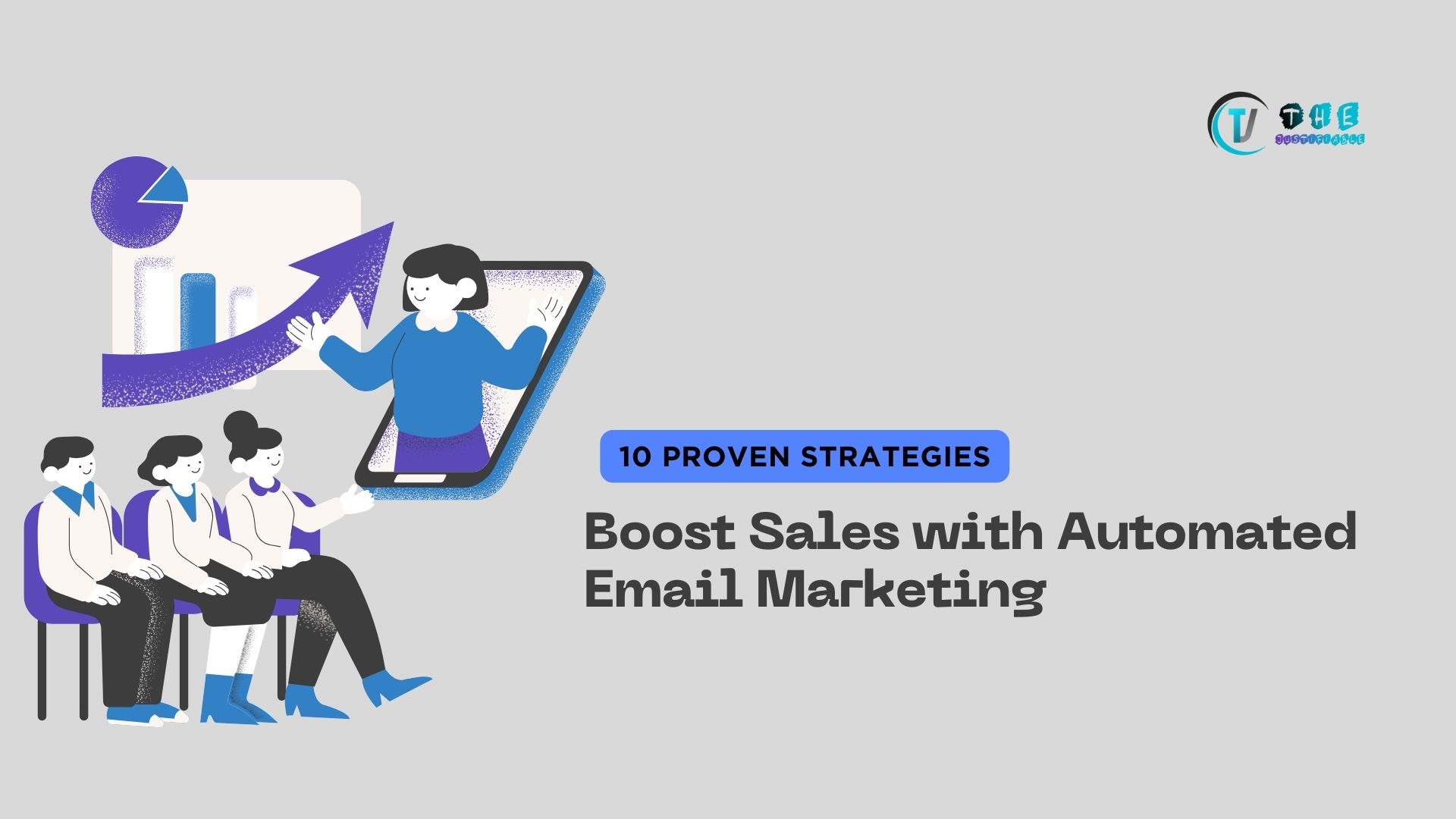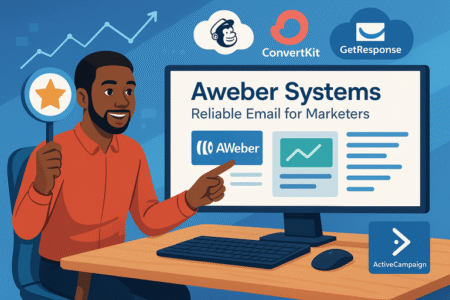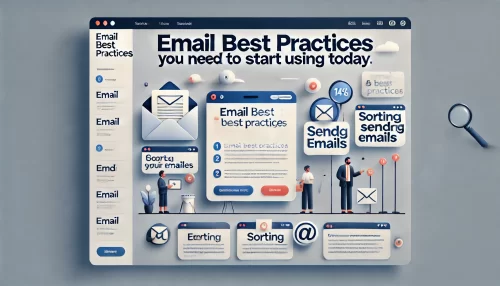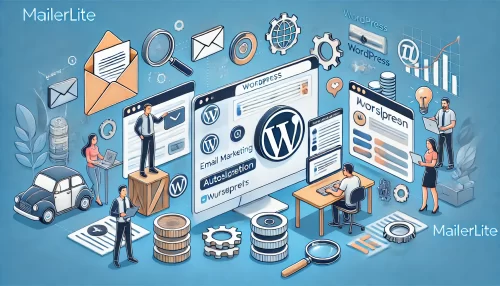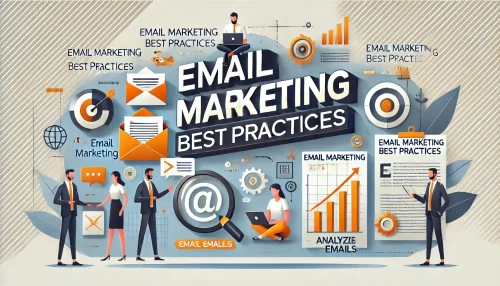Table of Contents
Automated email marketing is a powerful tool for boosting sales and enhancing customer engagement. By leveraging automation, businesses can create personalized experiences that drive conversions and build loyalty. Here are ten proven strategies to help you maximize the potential of automated email marketing.
Strategy 1: Optimize Welcome Email Sequences
Optimizing your welcome email sequences is crucial for making a strong first impression and setting the tone for future interactions. Automated email marketing allows you to create tailored experiences that engage new subscribers from the moment they join your list. By focusing on personalized messages, exclusive discounts, and onboarding tips, you can build a solid foundation for lasting customer relationships.
A well-crafted welcome email sequence can significantly increase engagement rates and encourage new subscribers to take immediate action. It’s essential to strike a balance between providing valuable information and promoting your products or services. Here are some effective strategies to consider.
Email Marketing Recommendations
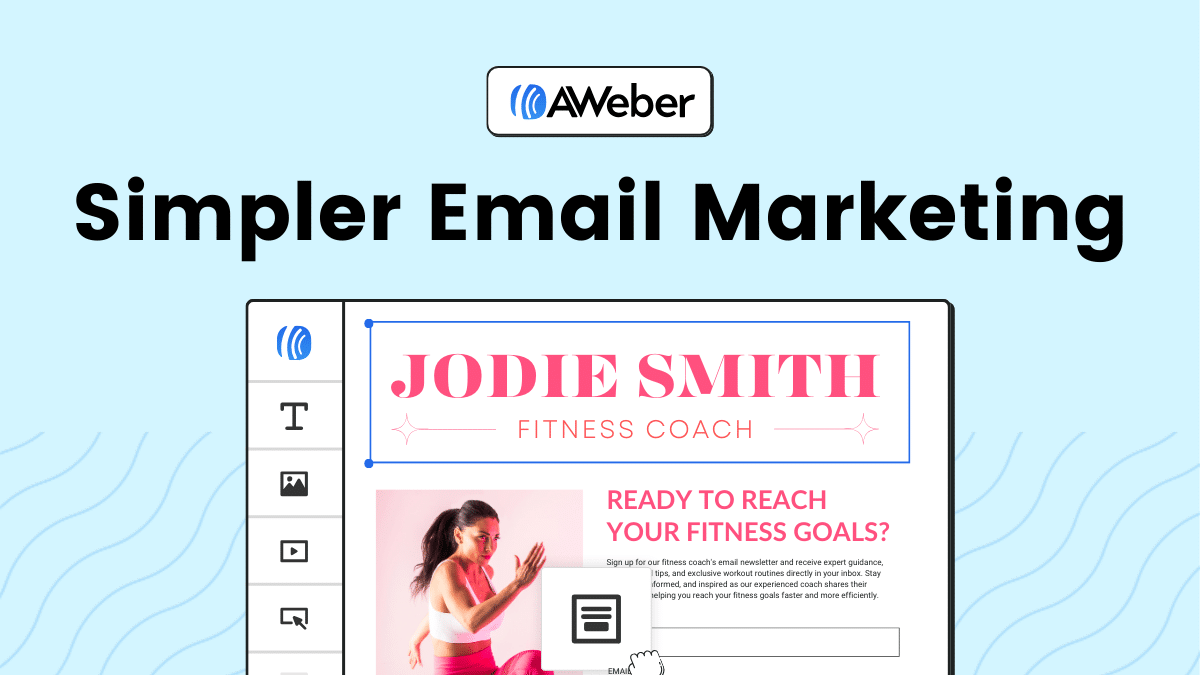 Aweber
| 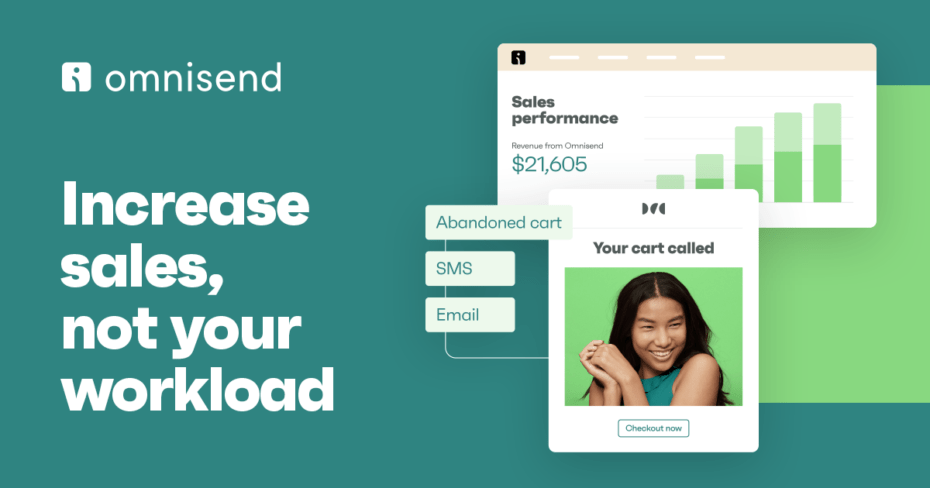 Omnisend
| 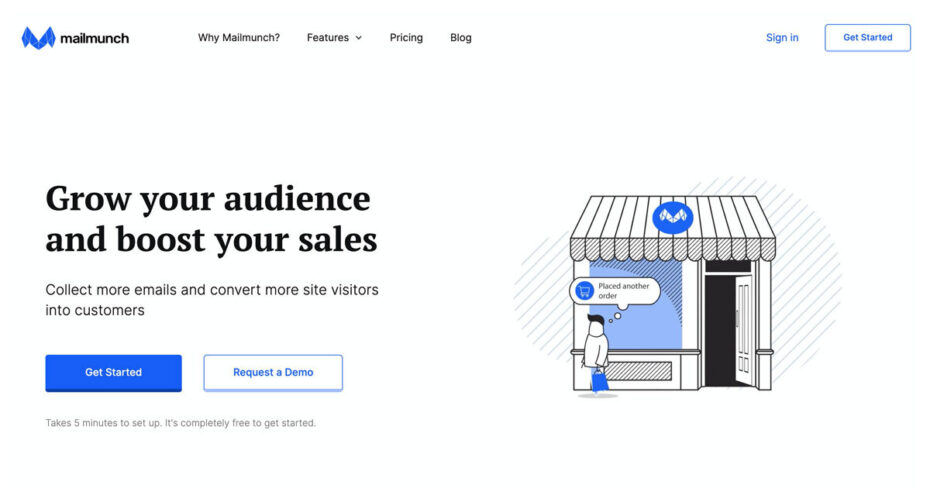 Mailmunch
|
Personalize Welcome Messages for Each Subscriber
Personalizing welcome messages is a powerful way to connect with new subscribers. Start by addressing them by name and acknowledging their specific interests or actions that led them to subscribe. Use automated email marketing tools to gather and utilize data about your subscribers, allowing you to tailor content that resonates with them.
For example, if a subscriber signed up after browsing a particular product category, mention that category in your welcome email and highlight related products or content. This approach not only makes the subscriber feel valued but also increases the likelihood of them making a purchase.
In addition to personalizing the content, consider the timing and frequency of your welcome emails. Sending a series of well-timed messages can help keep your brand top of mind and guide new subscribers through their initial interactions with your business. This sequence can include a mix of informational and promotional content to maintain interest and drive engagement.
Offer Exclusive Discounts in Welcome Emails
Offering exclusive discounts in your welcome emails is an excellent way to incentivize new subscribers to make their first purchase. A special offer can create a sense of urgency and provide the nudge needed to convert a potential customer into a paying one. Ensure that the discount is prominently displayed and easy to redeem.
When crafting your discount offer, make it clear why the subscriber is receiving it. Phrases like “As a thank you for joining our community” or “Welcome! Enjoy this exclusive offer just for you” can enhance the personal touch and make the subscriber feel appreciated.
Incorporating a compelling call to action (CTA) is vital. Encourage subscribers to take advantage of the discount immediately by highlighting the benefits of acting now, such as limited-time availability or exclusive access to new products. This urgency can drive faster conversions and boost your sales quickly.
Tracking the performance of these discount offers is also crucial. Use analytics to measure redemption rates and overall sales generated from your welcome email discounts. This data will help you refine your strategy and optimize future campaigns for better results.
Guide New Subscribers with Onboarding Tips
Guiding new subscribers with onboarding tips can enhance their experience and help them get the most out of your products or services. Use automated email marketing to deliver a series of educational and informative emails that address common questions and provide helpful insights.
Start with a welcome email that outlines what subscribers can expect from your emails and how often they will hear from you. This transparency sets clear expectations and can improve open rates for future emails. Follow up with a series of onboarding tips that are relevant to the subscriber’s interests or past behavior.
For instance, if you run an e-commerce store, you can send emails that include tips on how to choose the right products, user guides, and links to customer support resources. If you offer a service, provide step-by-step instructions on how to get started, access features, or maximize the benefits of your service.
Including testimonials and success stories in your onboarding emails can also be effective. They provide social proof and demonstrate the value of your offerings through real-life examples. This can build trust and encourage new subscribers to engage more deeply with your brand.
Strategy 2: Implement Behavioral Triggered Emails
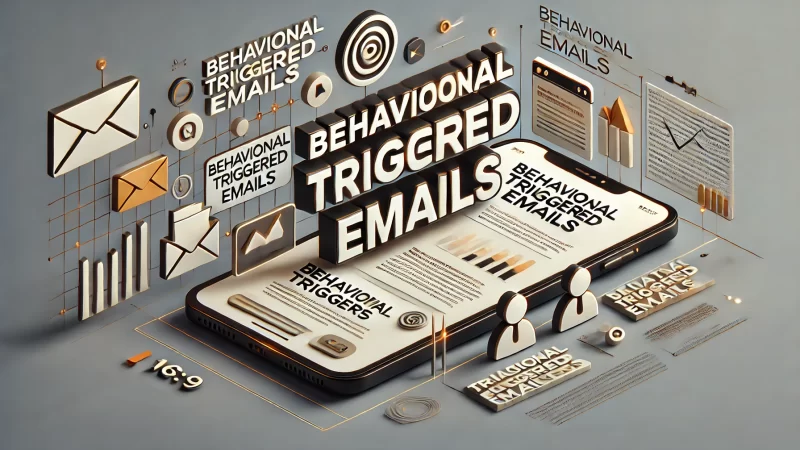
Implementing behavioral triggered emails is a game-changer in automated email marketing. By responding to specific actions taken by your customers, you can deliver highly relevant and timely messages that boost engagement and drive conversions. This strategy not only enhances customer experience but also increases the efficiency of your marketing efforts.
Behavioral triggered emails leverage customer data to create personalized interactions. Whether it’s a cart abandonment reminder, a follow-up on browsing behavior, or rewarding loyal customers, these emails are designed to reach the right person at the right time with the right message. Here are some powerful tactics to implement.
Send Cart Abandonment Reminders
Cart abandonment reminders are essential for recovering potentially lost sales. When a customer adds items to their cart but doesn’t complete the purchase, an automated email can remind them of what they left behind and encourage them to finalize their order.
To make these reminders effective, include images and descriptions of the abandoned items, along with a clear call to action (CTA) that directs the customer back to their cart. Adding a sense of urgency, such as highlighting limited stock availability or an expiring discount, can prompt quicker action.
Personalization is key in cart abandonment emails. Address the customer by name and consider offering an incentive, like a small discount or free shipping, to motivate them to complete the purchase. These tactics can significantly increase the conversion rate of your abandoned cart emails.
Follow Up on Browsing Behavior
Following up on browsing behavior allows you to engage customers who have shown interest in specific products or categories on your website. By tracking their browsing history, you can send targeted emails that highlight related products, special offers, or additional information that might interest them.
For example, if a customer has been looking at a particular type of product, send them an email featuring those products along with similar items. This approach helps keep your brand top of mind and encourages the customer to return to your site to explore more.
These follow-up emails should be timely and relevant. Send them shortly after the customer’s browsing session to capitalize on their interest. Use personalized content and dynamic product recommendations to make the email feel tailored to the individual’s preferences.
Reward Loyal Customers with Special Offers
Rewarding loyal customers with special offers is a powerful way to enhance customer retention and build long-term relationships. Automated email marketing can help you identify your most loyal customers and send them exclusive offers, discounts, or early access to new products.
Recognize and celebrate milestones, such as anniversaries of their first purchase or reaching a certain spending threshold. Personalize these emails to acknowledge their loyalty and express your appreciation. This not only makes them feel valued but also encourages continued engagement with your brand.
Including a mix of promotional and non-promotional content in these emails can be effective. Share news about upcoming product launches, invite them to special events, or ask for their feedback on recent purchases. This approach helps build a deeper connection and fosters a sense of community around your brand.
By implementing behavioral triggered emails, you can deliver highly relevant messages that resonate with your customers’ actions and preferences. Whether it’s recovering abandoned carts, following up on browsing behavior, or rewarding loyalty, these strategies enhance the effectiveness of your automated email marketing and drive meaningful results.
Strategy 3: Segment Your Email List for Targeted Campaigns
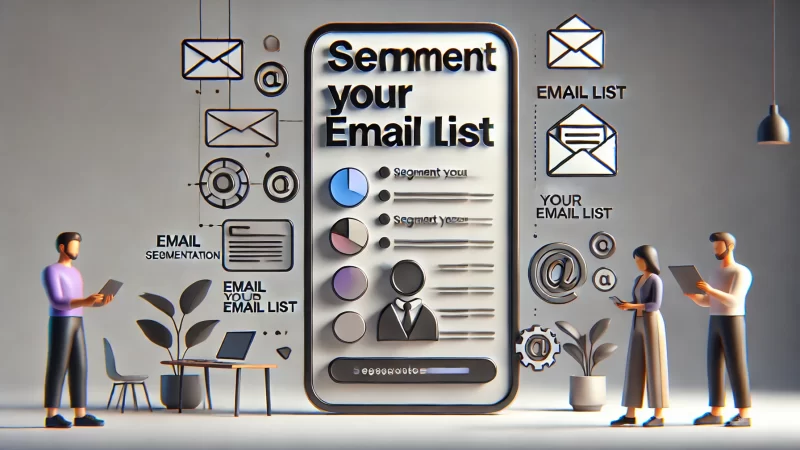
Segmenting your email list is a crucial strategy in automated email marketing that allows you to deliver highly relevant content to different groups of subscribers. By dividing your list based on specific criteria, you can tailor your messages to better meet the needs and interests of each segment, resulting in higher engagement and conversion rates. This approach ensures that your emails are more personalized and effective, making your marketing efforts more efficient and impactful.
Effective segmentation can lead to improved open rates, click-through rates, and overall customer satisfaction. It helps in understanding your audience better and delivering content that resonates with them. Here are some key methods to segment your email list for targeted campaigns.
Create Segments Based on Purchase History
Segmenting your email list based on purchase history allows you to target customers with specific product recommendations and promotions that match their buying patterns. This method is particularly effective for encouraging repeat purchases and upselling.
For example, if a customer has previously purchased a particular type of product, you can send them emails highlighting similar or complementary items. This approach not only increases the chances of additional sales but also enhances the customer experience by showing that you understand their preferences.
Additionally, you can create segments for customers who haven’t made a purchase in a while. Sending re-engagement emails with special offers or personalized recommendations can entice them to return to your store. Tracking purchase history and tailoring your emails accordingly can significantly boost your sales and customer loyalty.
Use Demographics to Tailor Content
Using demographics to tailor your email content is another effective segmentation strategy. By collecting data such as age, gender, location, and income level, you can create more personalized and relevant email campaigns that resonate with different demographic groups.
For instance, if you know the age group of your subscribers, you can adjust the tone, style, and content of your emails to better appeal to that demographic. Younger audiences might prefer more dynamic and visually engaging content, while older subscribers might appreciate more detailed and informative emails.
Location-based segmentation allows you to send targeted emails about local events, store openings, or region-specific promotions. This personalization makes your emails more relevant to the recipients and increases the likelihood of engagement. Demographic segmentation helps you connect with your audience on a more personal level, improving the effectiveness of your email marketing efforts.
Leverage Engagement Data for Segmentation
Leveraging engagement data for segmentation involves analyzing how subscribers interact with your emails and using this information to tailor your campaigns. Engagement data includes metrics such as open rates, click-through rates, and website activity.
By identifying highly engaged subscribers, you can send them exclusive content, early access to new products, or special offers. This rewards their loyalty and encourages continued interaction with your brand. On the other hand, for subscribers with low engagement, you can create re-engagement campaigns to reignite their interest.
Segmenting based on engagement levels also allows you to test different strategies. For example, you can experiment with different subject lines, email designs, or sending times to see what resonates best with each segment. Using engagement data effectively can optimize your email marketing campaigns, leading to better performance and higher ROI.
Overall, segmenting your email list for targeted campaigns in automated email marketing enhances personalization and relevance, leading to higher engagement and conversion rates. Whether you are segmenting by purchase history, demographics, or engagement data, these strategies help you deliver more meaningful and effective email content to your subscribers.
Strategy 4: Use A/B Testing to Optimize Campaigns
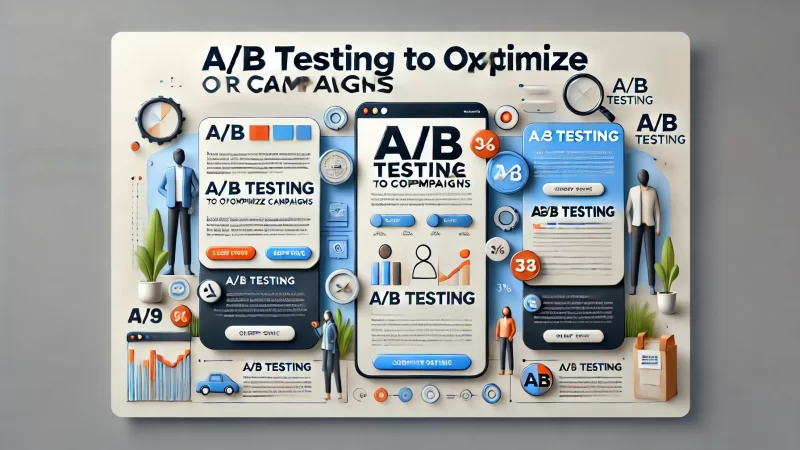
Using A/B testing in automated email marketing is a powerful way to optimize your campaigns and ensure they deliver maximum impact. By testing different elements of your emails, you can determine what resonates best with your audience and make data-driven decisions to improve performance. This method helps in fine-tuning various aspects of your email marketing strategy, leading to higher engagement and better results.
A/B testing, also known as split testing, involves creating two versions of an email with one variable changed, such as the subject line, email design, or call-to-action. By sending these versions to different segments of your audience, you can compare their performance and identify the most effective approach. This systematic testing process is crucial for continuous improvement in your email marketing efforts.
Test Subject Lines for Higher Open Rates
Testing subject lines is one of the most critical components of A/B testing in automated email marketing. The subject line is the first thing your subscribers see, and it significantly impacts whether they open your email or ignore it. To optimize open rates, experiment with different types of subject lines.
For instance, you can test personalized subject lines that include the recipient’s name against more generic ones. You can also compare short, punchy subject lines with longer, more descriptive ones. Additionally, try incorporating power words that evoke curiosity or urgency, such as “exclusive,” “limited-time,” or “urgent.”
Once you have your variations, send each version to a small segment of your list and analyze the open rates. The subject line that performs better can then be sent to the rest of your subscribers. Regularly testing and refining your subject lines will help you understand what grabs your audience’s attention and boosts your email open rates.
Experiment with Different Email Designs
Experimenting with different email designs is another effective way to optimize your campaigns through A/B testing. The design of your email can influence how recipients interact with your content, from clicking on links to making purchases. By testing various design elements, you can enhance the overall effectiveness of your emails.
Start by testing different layouts to see which ones are more engaging. For example, compare a single-column design with a multi-column layout. Test different placements of images, text, and call-to-action buttons to determine the most effective arrangement. Additionally, experiment with different color schemes and fonts to see how they impact readability and engagement.
It’s also beneficial to test the inclusion of interactive elements, such as videos or GIFs, to see if they increase click-through rates. By analyzing the results of these tests, you can identify the design elements that work best for your audience and refine your email templates accordingly.
Analyze Results to Improve Future Campaigns
Analyzing the results of your A/B tests is crucial for understanding what works and what doesn’t in your automated email marketing campaigns. After running your tests, collect data on key metrics such as open rates, click-through rates, and conversion rates. This data provides valuable insights into your audience’s preferences and behaviors.
Start by identifying which version of your test performed better and why. Look at the specific elements that contributed to its success, whether it’s the subject line, design, or call-to-action. Use these insights to inform your future campaigns and avoid repeating strategies that didn’t perform well.
Additionally, segment your results to see if certain variations performed better with specific audience groups. This granular analysis can help you tailor your future emails even more precisely. By continuously analyzing and learning from your A/B tests, you can make informed decisions that enhance the effectiveness of your email marketing strategy.
Implementing A/B testing in your automated email marketing not only helps in optimizing individual campaigns but also provides a deeper understanding of your audience’s preferences. By systematically testing subject lines, experimenting with email designs, and analyzing results, you can continuously improve your campaigns and achieve better engagement and conversion rates.
Strategy 5: Automate Post-Purchase Follow-Up Emails
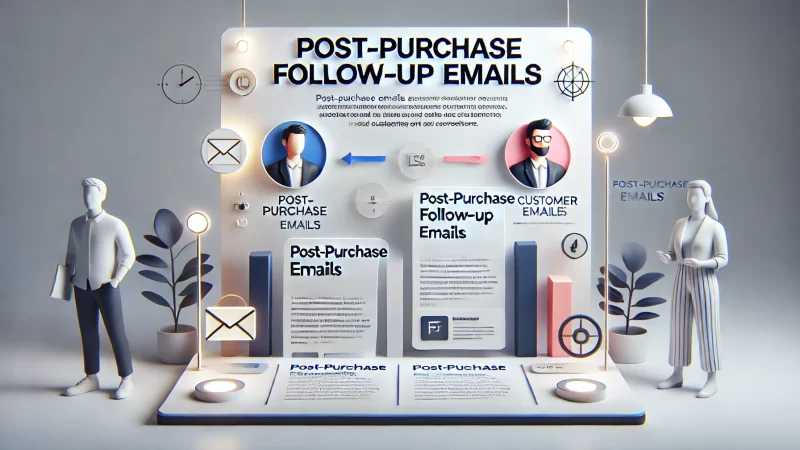
Automating post-purchase follow-up emails is a crucial strategy in automated email marketing. This approach helps you maintain engagement with customers after their purchase, enhancing their experience and fostering long-term loyalty. By sending timely and relevant follow-up emails, you can encourage repeat purchases and build a stronger relationship with your customers.
Post-purchase emails provide an opportunity to show appreciation, gather feedback, and offer additional value. These emails should be personalized and relevant to the customer’s recent purchase. Here are some key tactics to implement in your post-purchase follow-up strategy.
Request Customer Feedback and Reviews
Requesting customer feedback and reviews is an effective way to engage with your customers post-purchase. These emails not only help you gather valuable insights about your products and services but also show customers that you value their opinions.
Send an email a few days after the purchase, asking customers to share their thoughts on the product. Include a direct link to your review platform to make the process easy and convenient. Personalize the email by addressing the customer by name and mentioning the specific product they purchased.
Offering an incentive, such as a discount on their next purchase, can motivate customers to leave a review. Highlight how their feedback helps improve your products and services, reinforcing their importance to your business. Positive reviews can also serve as social proof, attracting new customers.
Upsell and Cross-Sell Related Products
Upselling and cross-selling related products in your post-purchase follow-up emails can significantly increase your average order value. Automated email marketing allows you to recommend products that complement the customer’s recent purchase, encouraging them to buy more.
For example, if a customer bought a smartphone, you can suggest accessories like cases, chargers, or headphones. Use personalized recommendations based on their purchase history and browsing behavior to make the suggestions more relevant.
Include compelling visuals and clear descriptions of the recommended products. Highlight any special offers or discounts to create a sense of urgency. This approach not only drives additional sales but also enhances the customer’s overall shopping experience by providing them with useful product suggestions.
Provide Care Tips and Product Usage Guides
Providing care tips and product usage guides in your post-purchase emails adds value and helps customers get the most out of their purchases. This strategy demonstrates your commitment to customer satisfaction and can lead to increased loyalty.
Send an email with detailed instructions on how to use and care for the purchased product. Include helpful tips, troubleshooting advice, and links to video tutorials if available. This information can prevent potential issues and reduce the likelihood of returns.
Additionally, encourage customers to reach out if they have any questions or need further assistance. Offering excellent post-purchase support builds trust and enhances the overall customer experience. By providing useful content, you can keep customers engaged and foster long-term relationships.
Strategy 6: Develop a Re-Engagement Campaign
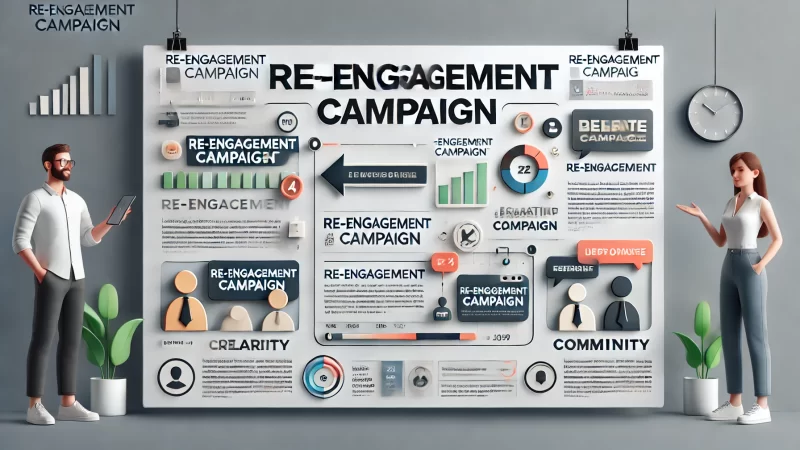
Developing a re-engagement campaign is essential for reconnecting with inactive subscribers and keeping your email list healthy. Automated email marketing allows you to identify and target subscribers who haven’t interacted with your emails for a while, offering them incentives to re-engage.
A successful re-engagement campaign can revive interest and increase email open rates. It also helps you maintain a clean and active email list, ensuring that your marketing efforts reach an interested audience. Here are some effective strategies to implement in your re-engagement campaign.
Identify Inactive Subscribers
Identifying inactive subscribers is the first step in developing a re-engagement campaign. Use automated email marketing tools to track subscribers who haven’t opened or clicked your emails over a specified period, such as three or six months.
Create a segment of these inactive subscribers to target them with a specific re-engagement campaign. Understanding why these subscribers became inactive can help you tailor your approach. They may have lost interest, found your emails irrelevant, or experienced changes in their needs.
Regularly monitoring engagement metrics and updating your inactive subscriber list ensures that you focus your re-engagement efforts on the right audience. This step is crucial for the success of your campaign.
Craft Compelling Re-Engagement Offers
Crafting compelling re-engagement offers can entice inactive subscribers to interact with your emails again. These offers should be attractive and relevant to capture their interest and encourage them to take action.
Consider offering exclusive discounts, special promotions, or access to new products as part of your re-engagement email. Use engaging subject lines and personalized content to grab their attention. Highlight the benefits of re-engaging with your brand and make the offer time-sensitive to create urgency.
Including a survey or asking for feedback can also be effective. This approach not only re-engages subscribers but also provides valuable insights into why they became inactive and what improvements can be made.
Remove Unresponsive Contacts to Maintain List Health
Removing unresponsive contacts from your email list is essential to maintaining its health and effectiveness. Keeping inactive subscribers can negatively impact your email deliverability and engagement rates, reducing the overall performance of your campaigns.
After attempting to re-engage inactive subscribers with compelling offers and relevant content, identify those who remain unresponsive. Send a final email informing them that they will be removed from your list unless they take action to stay subscribed.
Regularly cleaning your email list by removing unresponsive contacts ensures that your emails are sent to an engaged and interested audience. This practice improves your email marketing metrics and helps you focus on subscribers who are more likely to convert.
By automating post-purchase follow-up emails and developing a re-engagement campaign, you can enhance customer relationships and improve the overall effectiveness of your automated email marketing efforts. These strategies ensure that your communications are timely, relevant, and valuable to your audience.
Strategy 7: Use Email Automation for Special Events and Holidays
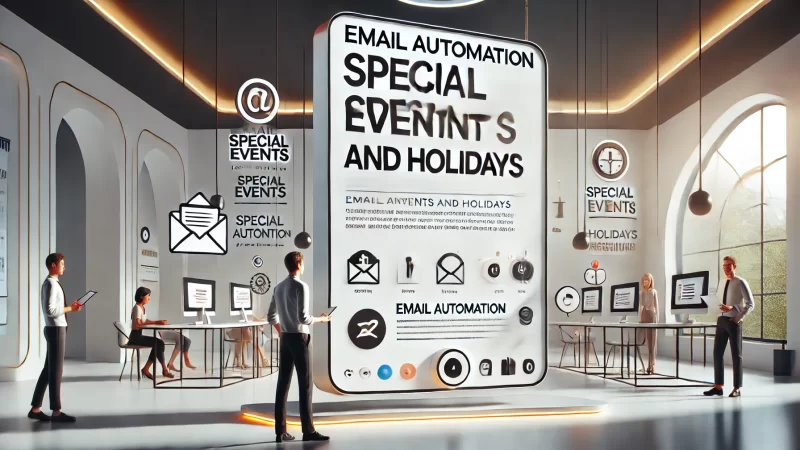
Using email automation for special events and holidays is an effective strategy in automated email marketing that helps you capitalize on peak shopping periods and unique occasions.
By planning and scheduling your campaigns around these key dates, you can create timely, relevant, and engaging content that resonates with your audience and drives sales. Automated email marketing allows you to effortlessly manage these campaigns and ensure they reach your subscribers at the optimal time.
Special events and holidays present a golden opportunity to connect with your customers in a meaningful way. Whether it’s sending out festive greetings, exclusive holiday offers, or event-specific promotions, automated email marketing helps you stay top-of-mind and enhances customer loyalty.
Schedule Campaigns for Major Holidays
Scheduling campaigns for major holidays is essential for maximizing the impact of your automated email marketing efforts. Holidays like Christmas, Thanksgiving, and Black Friday are prime times to engage with your audience and boost sales. By preparing your campaigns in advance, you can ensure timely delivery and avoid last-minute rushes.
Create a calendar of major holidays relevant to your audience and plan your email content accordingly. Use automated email marketing tools to schedule your campaigns, ensuring they are sent at optimal times. Tailor your messages to reflect the holiday spirit, incorporating festive themes and power words like “exclusive,” “limited-time,” and “celebrate.”
Offering special discounts, holiday bundles, or gift guides can entice customers to make purchases. Highlighting these promotions in your subject lines and email content can increase open rates and drive conversions. Monitoring the performance of these campaigns will help you refine your strategies for future holidays.
Celebrate Customer Birthdays with Special Offers
Celebrating customer birthdays with special offers is a fantastic way to personalize your automated email marketing and make your subscribers feel valued. Sending a birthday email with a personalized greeting and an exclusive offer can significantly enhance customer loyalty and encourage repeat purchases.
Use your automated email marketing platform to collect and store customers’ birthdates. Set up automated triggers to send birthday emails at the right time. Personalize the email by addressing the recipient by name and mentioning their special day. Including a discount code, free gift, or special promotion in the birthday email can make it even more enticing.
Craft your birthday emails with a friendly and celebratory tone, using power words like “celebrate,” “exclusive,” and “special gift.” Ensure the offer is easy to redeem and highlight the benefits of using it. This personal touch not only makes customers feel appreciated but also increases the likelihood of them making a purchase.
Promote Limited-Time Sales Events
Promoting limited-time sales events through automated email marketing can create a sense of urgency and drive immediate action. These events can be tied to holidays, seasonal changes, or special occasions, providing an excellent opportunity to boost sales and clear inventory.
Plan your limited-time sales events in advance and use automated email marketing to schedule and send out promotional emails. Highlight the time-sensitive nature of the sale in your subject lines and email content, using power words like “hurry,” “limited-time,” and “exclusive offer” to create urgency.
Include clear calls to action (CTAs) and eye-catching visuals to draw attention to your promotions. Provide details about the sale, including the duration, discounts, and featured products. Tracking the performance of these campaigns can help you understand what works best and optimize future sales events.
Strategy 8: Leverage Dynamic Content for Personalization
Leveraging dynamic content for personalization in automated email marketing can significantly enhance customer engagement and satisfaction. Dynamic content allows you to tailor email messages to individual subscribers based on their preferences, behaviors, and demographics. This level of personalization makes your emails more relevant and impactful, leading to higher open and click-through rates.
Automated email marketing platforms enable you to create and deliver personalized content at scale. By integrating dynamic content into your email campaigns, you can provide a more customized experience that resonates with your audience and drives conversions.
Use Customer Data to Personalize Email Content
Using customer data to personalize email content is a powerful way to enhance the effectiveness of your automated email marketing. Collect data on customer preferences, purchase history, and browsing behavior to tailor your email messages to individual recipients.
Segment your email list based on this data and create dynamic content blocks that adjust according to the recipient’s profile. For example, you can display different product recommendations, offers, or messages based on the customer’s past purchases or interests. This level of personalization makes your emails more relevant and engaging.
Incorporate personalized greetings and mentions of previous interactions to make the recipient feel valued. Using power words like “recommended for you” and “exclusive offer” can enhance the appeal of your personalized content. Regularly updating and refining your data collection processes will ensure your personalization efforts remain effective.
Include Personalized Product Recommendations
Including personalized product recommendations in your automated email marketing can drive higher engagement and sales. By analyzing customer data, you can identify products that are likely to interest each subscriber and include these recommendations in your emails.
Use automated email marketing tools to dynamically insert product recommendations based on the recipient’s purchase history or browsing behavior. Highlight these recommendations in a dedicated section of your email, using compelling visuals and descriptions to capture attention.
Personalized product recommendations can be particularly effective in post-purchase follow-up emails, cart abandonment reminders, and re-engagement campaigns. Mentioning that the recommendations are “handpicked” or “specially selected” for the recipient can make them feel valued and increase the likelihood of a purchase.
Customize Offers Based on Customer Preferences
Customizing offers based on customer preferences is an effective way to increase the relevance and appeal of your automated email marketing campaigns. By understanding what each customer values, you can tailor your offers to meet their specific needs and interests.
Collect and analyze data on customer preferences through surveys, purchase history, and browsing behavior. Use this information to create personalized offers, such as discounts on frequently purchased items, early access to new products, or special promotions for high-value customers.
Incorporate these customized offers into your email campaigns using dynamic content. Highlight the personalization aspect by mentioning that the offer is “just for you” or “based on your preferences.” This approach can increase the perceived value of the offer and encourage customers to take action.
By leveraging dynamic content for personalization, you can create more relevant and engaging email campaigns that resonate with your audience. Whether it’s using customer data, including personalized product recommendations, or customizing offers, these strategies enhance the effectiveness of your automated email marketing efforts.
Strategy 9: Integrate Email Marketing with CRM Systems
Integrating email marketing with CRM systems is a powerful strategy in automated email marketing that allows you to leverage customer data for more targeted and effective campaigns. By syncing your email marketing platform with your CRM, you can gain deeper insights into customer behavior, preferences, and interactions, enabling you to create more personalized and impactful email campaigns. This integration helps streamline your marketing efforts and improves the overall efficiency of your campaigns.
A seamless integration between your email marketing and CRM systems ensures that all customer data is up-to-date and accessible in one place. This comprehensive view of your customers allows for better segmentation, personalized messaging, and more informed decision-making. Here are some key benefits of integrating email marketing with CRM systems.
Sync Customer Data for Better Insights
Syncing customer data between your email marketing platform and CRM system provides a complete view of each customer’s journey. This data includes purchase history, browsing behavior, preferences, and previous interactions, allowing you to tailor your email marketing efforts more effectively.
By having access to detailed customer profiles, you can create highly personalized email campaigns that resonate with your audience. For example, if your CRM data shows that a customer frequently purchases a particular product type, you can send them targeted emails featuring similar products or exclusive offers.
Automated email marketing tools can continuously update customer data, ensuring that your insights are always accurate and relevant. This real-time synchronization enables you to respond promptly to customer actions and preferences, enhancing the overall customer experience.
Automate Lead Nurturing Campaigns
Automating lead nurturing campaigns through the integration of email marketing and CRM systems can significantly improve your ability to convert leads into customers. Lead nurturing involves sending a series of targeted emails that guide prospects through the sales funnel, providing them with relevant information and incentives to make a purchase.
Using data from your CRM, you can segment your leads based on their behavior, interests, and stage in the sales funnel. Automated email marketing allows you to create personalized nurturing sequences that address the specific needs and concerns of each segment.
For instance, new leads might receive educational content and product information, while warmer leads could receive case studies, testimonials, and special offers. This tailored approach ensures that each lead receives the right message at the right time, increasing the likelihood of conversion.
Track Customer Interactions for Enhanced Personalization
Tracking customer interactions across your email marketing and CRM systems enables you to deliver highly personalized email campaigns. By monitoring how customers engage with your emails, website, and other touchpoints, you can gain valuable insights into their preferences and behavior.
Use this data to create dynamic content that adjusts based on the recipient’s actions. For example, if a customer clicks on a specific product link in an email, you can follow up with a personalized email featuring related products or a special offer on that item.
Personalization extends beyond product recommendations. You can also tailor email content based on customer demographics, purchase history, and engagement levels. By continuously tracking and analyzing customer interactions, you can refine your email marketing strategy to better meet the needs and interests of your audience.
Strategy 10: Monitor and Analyze Email Campaign Performance
Monitoring and analyzing email campaign performance is crucial for optimizing your automated email marketing efforts. By tracking key metrics and using analytics tools, you can identify areas for improvement and make data-driven decisions to enhance your campaigns. This ongoing evaluation ensures that your email marketing strategy remains effective and aligned with your business goals.
Regularly reviewing your campaign performance helps you understand what works and what doesn’t, allowing you to adjust your approach accordingly. Here are some essential metrics and strategies for analyzing your email marketing performance.
Track Key Metrics like Open and Click Rates
Tracking key metrics such as open rates and click-through rates provides valuable insights into how your email campaigns are performing. Open rates indicate the percentage of recipients who opened your email, while click-through rates show how many clicked on links within the email.
These metrics help you gauge the effectiveness of your subject lines, email content, and calls-to-action. For instance, a low open rate might suggest that your subject lines need improvement, while a low click-through rate could indicate that your email content or CTAs are not engaging enough.
Regularly monitoring these metrics allows you to make data-driven adjustments to your campaigns. Experiment with different subject lines, content formats, and CTAs to see what resonates best with your audience and drives higher engagement.
Use Analytics to Identify Improvement Areas
Using analytics tools to identify areas for improvement in your email campaigns is essential for continuous optimization. Analyzing data such as conversion rates, bounce rates, and unsubscribe rates can reveal patterns and trends that inform your strategy.
For example, high conversion rates might indicate that your email content and offers are highly effective, while high bounce or unsubscribe rates could suggest issues with your email list quality or relevance of your content. Dive deeper into the data to understand the underlying reasons and make informed adjustments.
Segment your data by different audience groups, campaign types, and time periods to gain a more granular understanding of performance. This detailed analysis helps you pinpoint specific areas that need improvement and develop targeted strategies to address them.
Regularly Review and Refine Automation Workflows
Regularly reviewing and refining your automation workflows is crucial for maintaining the effectiveness of your automated email marketing campaigns. Over time, customer behaviors and preferences can change, and your email strategies should adapt accordingly.
Analyze the performance of your automation workflows, such as welcome sequences, abandoned cart reminders, and re-engagement campaigns. Identify which workflows are performing well and which ones need improvement. Use A/B testing to experiment with different elements and find the most effective approach.
Make data-driven adjustments to your workflows based on performance insights. For example, if your abandoned cart emails have low conversion rates, consider testing different subject lines, email designs, or incentives. Regularly updating your automation workflows ensures that they remain relevant and effective in driving engagement and conversions.
By integrating email marketing with CRM systems and continuously monitoring and analyzing campaign performance, you can create highly personalized and impactful email campaigns. These strategies enhance the efficiency and effectiveness of your automated email marketing efforts, leading to better customer engagement and higher conversion rates.
Frequently Asked Questions (FAQ)
What is automated email marketing?
Automated email marketing refers to the use of software to send targeted, personalized emails to subscribers based on predefined triggers and schedules. This can include welcome emails, abandoned cart reminders, and follow-ups, improving engagement and conversion rates without manual intervention.
How can automated email marketing boost sales?
Automated email marketing boosts sales by delivering timely and relevant content to subscribers. By sending personalized offers, reminders, and product recommendations, it increases the likelihood of conversions and repeat purchases. Automation also ensures consistent communication, enhancing customer loyalty.
What are the benefits of using automated email marketing?
The benefits of automated email marketing include increased efficiency, personalized customer interactions, improved engagement rates, higher conversion rates, and detailed analytics. It allows businesses to maintain consistent communication, nurture leads, and build stronger customer relationships.
How do I set up automated email marketing?
To set up automated email marketing, choose a reliable email marketing platform, segment your email list, and create personalized email templates. Define triggers for each automated email, such as user actions or specific dates, and set up workflows to ensure timely delivery.
What types of emails can be automated?
Types of emails that can be automated include welcome emails, cart abandonment reminders, post-purchase follow-ups, re-engagement campaigns, birthday or anniversary emails, and promotional offers. Each type serves to engage subscribers at different stages of their customer journey.
How do I measure the success of my automated email marketing campaigns?
Measure the success of automated email marketing campaigns using key metrics like open rates, click-through rates, conversion rates, and ROI. Use analytics tools provided by your email marketing platform to track performance and make data-driven adjustments to your campaigns.
What are some best practices for automated email marketing?
Best practices include segmenting your email list, personalizing content, using clear and compelling subject lines, optimizing for mobile devices, and regularly testing and refining your emails. Ensure compliance with email marketing regulations and maintain a clean, up-to-date email list.
How can I improve my email automation workflows?
Improve email automation workflows by continuously analyzing performance data, testing different strategies, and incorporating feedback. Regularly update and refine triggers, content, and segmentation to keep your emails relevant and engaging. Use A/B testing to identify the most effective elements.
What are common challenges in automated email marketing?
Common challenges include managing data quality, avoiding spam filters, maintaining subscriber engagement, and ensuring email deliverability. Overcoming these challenges requires regular list maintenance, compliance with email marketing best practices, and continuous optimization of email content and timing.
How does automated email marketing integrate with other marketing channels?
Automated email marketing integrates with other marketing channels by complementing strategies like social media, content marketing, and SEO. It helps nurture leads generated from other channels, drives traffic to your website, and provides personalized follow-ups based on user interactions across different platforms.


